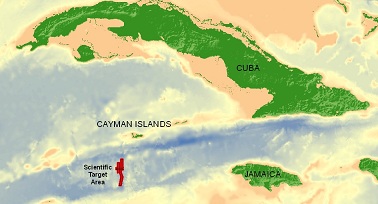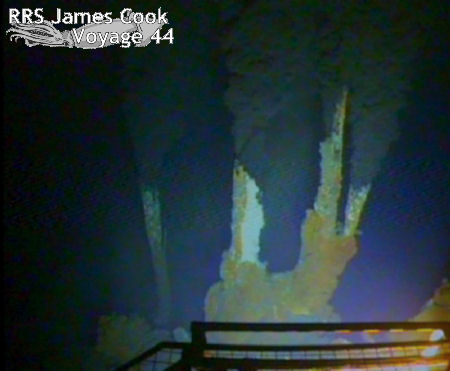Monday 12th April
After our big announcement, our Chief Scientist Doug has been very busy answering media questions as the world follows our journey. We're delighted to have visitors to the website from more than 69 countries so far - thank you all for your interest, and we hope you enjoy sharing in the exploration.
A summary of how we got to where we are today may be helpful. Marine scientists first found deep-sea vents on mid-ocean ridges three decades ago, but many thought that slower-spreading ridges - where the plates of the Earth's crust are moving apart least rapidly - would not have enough volcanic activity to support deep-sea vents. The Mid-Cayman Spreading Centre where we are working is a so-called 'ultraslow-spreading' ridge, so for a long time many scientists thought it unlikely that there could be deep-sea vents here.
But science is about testing ideas, and so the Mid-Cayman Spreading Centre is a good place to test geological ideas about how mid-ocean ridges work. It's also a hot target for marine biology, because it lies in a deep basin where we can examine the effects of isolation, geological history and ocean currents on patterns of life in the deep ocean. The oceanography of the Cayman Trough is also not well known, with no recent surveys using modern instruments.
All in all, there were lots of good reasons to investigate this poorly-known part of our planet (please see our Science pages for further details of 'why bother?'). So we put together a team and a proposal for a research project in the UK to do just that, using our latest underwater technology.

Two of our team - Doug and Carla - then joined a US expedition to the Cayman Trough last year, led by our colleagues ashore Profs Cindy Van Dover and Chris German (see Team). That expedition surveyed the deep waters of the Cayman Trough and detected signs of deep-sea vents on the seafloor below, which helped to narrow down the search area for this expedition.
Our first task on this expedition was to map the seafloor in fine detail using the ship's multibeam sonar and TOBI (the Towed Bottom Instrument). Then we used a combination of surveys with our CTD probe, and missions by our robot submarine Autosub6000, to pinpoint the likely location of the vents on the ocean floor. Finally, with our maps and survey results, we had a good target for a dive with HyBIS, our remotely-controlled underwater vehicle - and through HyBIS we found and filmed the world's deepest known vents.

Check back tomorrow for a special on HyBIS and its dives so far at the vents. And back in the present, today we finished a HyBIS dive at Mount Dent in the small hours of the morning, and have spent the rest of the day using Autosub6000 to hunt for plumes from vents in two different layers of water towards the southern end of our study area. Although this mission does not take the sub close to the rugged terrain of the seafloor, in other ways it is perhaps its most complex task during the expedition so far. We'll find out tomorrow morning how it got on.


